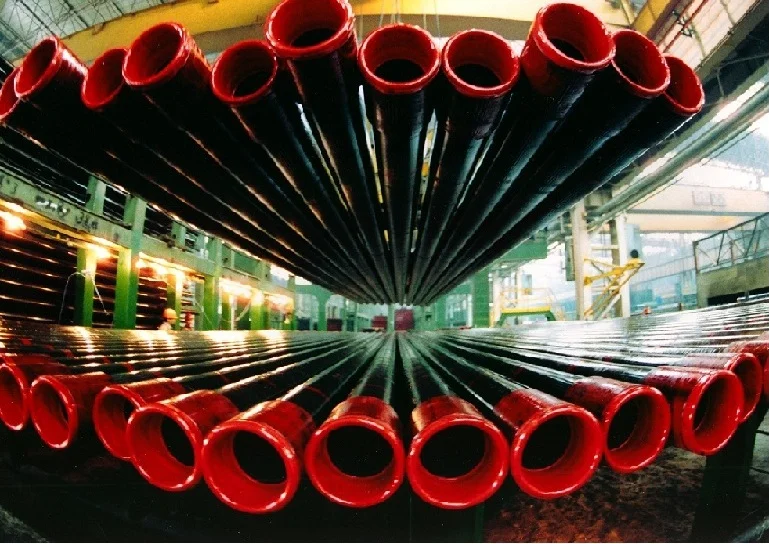The production process of galvanized pipe
Galvanized pipe, in order to improve the corrosion resistance of steel pipe, general steel pipe is galvanized. Galvanized pipes are divided into two types: hot-dip galvanizing and electro-galvanizing. The hot-dip galvanizing layer is thick, the cost of electro-galvanizing is low, and the surface is not very smooth.

Production process:
1) Alkaline washing: some steel pipes have oil stains on the surface, which need to be alkali washed;
2) Pickling: pickling with hydrochloric acid to remove the oxide scale on the surface of the steel pipe;
3) Rinsing: mainly to remove residual acid and iron salts attached to the surface of the steel pipe;
4) Dip Auxiliary: The function of the cosolvent is to remove all impurities from the surface of the steel pipe, to ensure the clean contact between the steel pipe and the zinc liquid, and to form a good coating;
5) Drying: mainly to prevent the steel pipe from being immersed in the zinc pot to cause blasting;
6) Hot-dip galvanizing: The temperature of the zinc liquid in the zinc pot is strictly controlled at 450±5°C, and the steel pipe is put into the galvanizing furnace and rolled into the three galvanizing spirals in the galvanizing machine, and the three spirals have different phases. The steel pipe is inclined on the spiral. As the spiral rotates, one side of the steel pipe moves downward and the other side forms an inclination angle, and then enters the zinc liquid, continues to move downward, and automatically falls on the slide rail in the zinc pot; wait until the steel pipe is lifted to the When the magnetic roller is on the roller surface, it will be sucked and moved to the pull-out roller table;
7) External blowing: The steel pipe passes through the external blowing ring and compresses the air to blow off the excess zinc liquid of the steel pipe to obtain a smooth appearance;
8) Drag-out: Appropriately reduce the drag-out speed, which can control the amount of zinc and reduce zinc consumption;
9) Internal blowing: remove the excess zinc liquid on the inner surface of the steel pipe to obtain a smooth inner surface, and the removed zinc liquid is recovered as zinc powder;
10) Water cooling: the temperature of the water cooling tank is controlled at 80°C, and the galvanized pipe is cooled;
11) Passivation: The passivation solution is sprayed on the finished pipe of the ring to passivate the surface of the tube. After the ring is blown outside, the excess passivation solution is blown off with compressed air;
12) Inspection: The galvanized pipe falls on the inspection bench. After the inspection, the leaking zinc pipe is put into the waste box, and the finished pipe is packed and put into storage.
The advantages of galvanized pipe:
1) Low processing fee
The cost of rust prevention of galvanized pipe is lower than that of other paint coatings;
2) Durable
In suburban environments, the rust-proof thickness of standard galvanized steel pipes can be maintained for more than 50 years without repairing; in urban or offshore areas, the standard rust-proofing layer of galvanized pipes can be maintained for 20 years without repairing;
3) Good reliability
The galvanized layer and the steel are metallurgically bonded and become part of the steel surface, so the durability of the coating is more reliable;
4) The toughness of the coating is strong
The galvanized layer forms a special metallurgical structure that can withstand mechanical damage during transportation and use;
5) Comprehensive protection
Every part of the plated part can be galvanized, even in depressions, sharp corners and hidden places can be fully protected;
6) Save time and effort
The galvanizing process is faster than other coating application methods, and can avoid the time required for painting on the site after installation;
7) Low initial cost
In general, the cost of galvanized pipe is lower than applying other protective coatings, mainly because the process of galvanized pipe is more mechanized and more efficient;
8) Inspection is simple and convenient
The galvanized layer can be tested visually and with a simple non-destructive coating thickness gauge, which is convenient for inspection.






